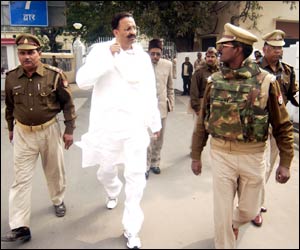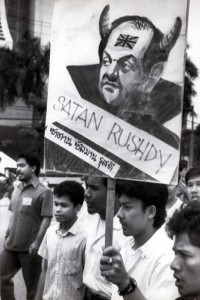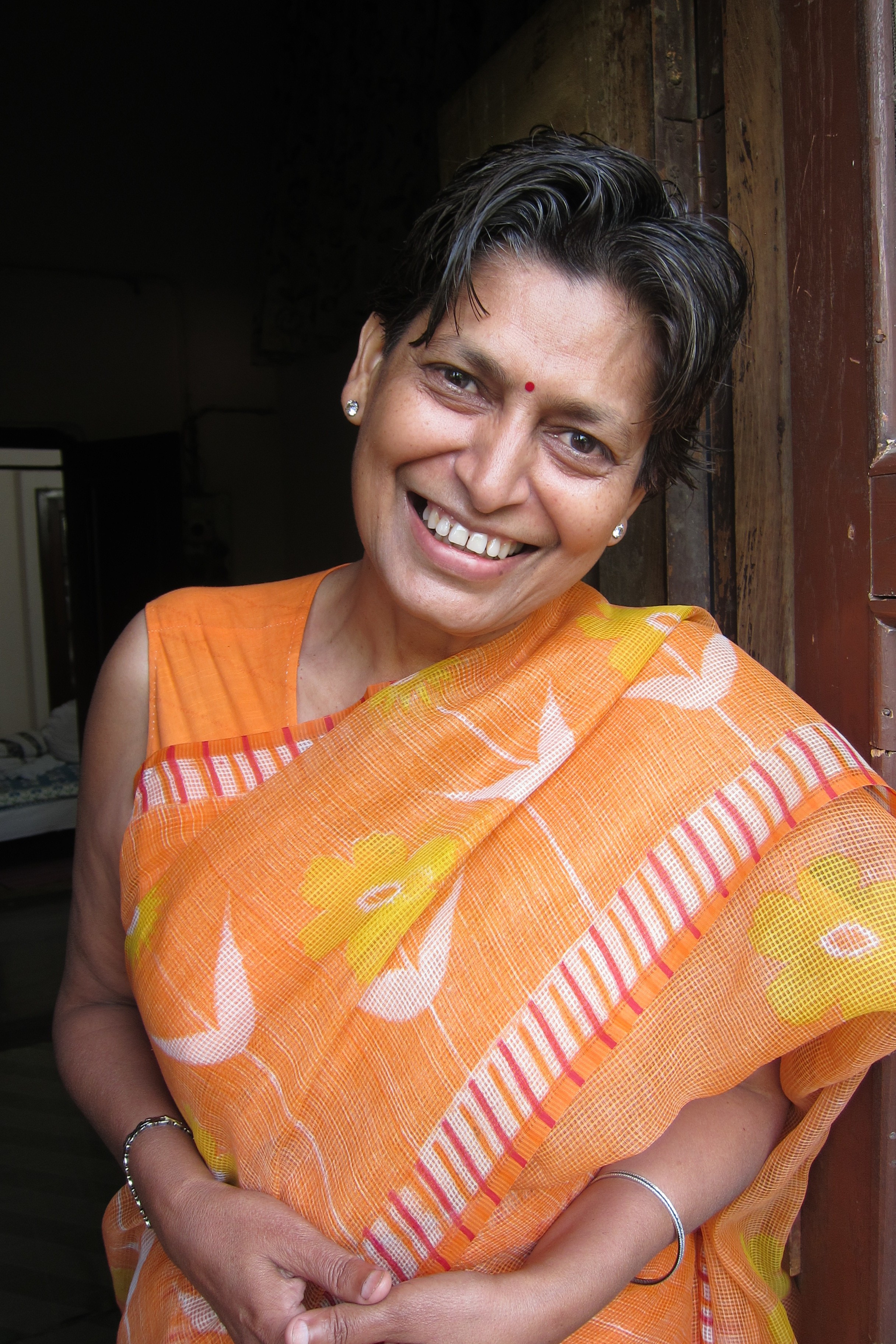Three from the NatGeo blog: On the trail of endangered pangolins from Africa to restaurants in China; wrestling as peacebuilding in South Sudan; and an unprecedented scientific investigation into neonatal death in Bangladesh, India, and Pakistan.
Hindu Right-Wingers Feasting in Gandhi’s Domain
I wrote in the New York Times a few months ago about the takeover of the Gandhian Institute of Studies in Varanasi, India, by a clique of so-called “academics” tied to the right-wing Rashtriya Swayamsevak Sangh. The RSS, a paramilitary organization with an estimated 5 million members, “actually was the inspiration and source of the Kill Gandhi and Hate Gandhi movement” that led to Gandhi’s assassination, according to Tushar Gandhi, a great-grandson of the Mahatma.
It’s ironic, Tushar told me, that the RSS “is attempting to grab an institution founded by Ram Manohar Lohia, a eminent follower of Gandhi and one of India’s leading socialist leaders.”
Now comes news that the grounds of the Gandhian Institute have recently been used to host a meeting of RSS leaders. Clips (in Hindi) after the jump.
It’s a world of fakes and charlatans — they’re in every city in every country. But still: The Gall.
Continue reading “Hindu Right-Wingers Feasting in Gandhi’s Domain”
Retiring the Western Hero
Aid organizations have long struggled with the issue of how to get donors engaged. Faced with the choice of making supporters feel they’re singlehandedly saving the world versus showering them with administrative details about vaccines, food, and emergency tarps, it’s not surprising many choose to emphasize the individual, be it your individual contribution, a single (usually famous) interlocutor, ala Nicholas Kristof or Angelina Jolie, or individual beneficiaries. People want to feel connected.
Murder and Reform in Bihar
Two from Bihar, India’s poorest state, where the newspapers talk of a turnaround and the people keep watch for ruling party thugs. A Final Interview with Brahmeshwar Nath Singh, for the New York Times, looks at a high-caste militia leader, implicated in the murders of nearly 300 landless peasants. Brahmeshwar Singh was assassinated a few days after I spoke with him last summer. The Dark Side of India’s Mr. Clean, for Al Jazeera, explores the political realities that bind a genuine reformist politician to local despots and gangsters.
In India, it’s Mr. Sputum to the Rescue
This post first appeared at NatGeo NewsWatch.
PATNA, India – Perched high on a rooftop amid the pollution and noise of a vibrant Indian city, a new kind of superhero listens for signs of the enemy.
His ears tuned to an array of elaborately curved trumpets, Bulgam Bhai strains to hear the ever-present danger and then pounces. When an Indian coughs, this jocular public health avenger — all candy stripes and waxed mustache –- appears in a flash with a potentially life-saving question:
“Has it been two weeks?”
Opium! Intimate Skin-Bleaching! Egyptian Zombies!
A round-up of recent work: Let’s Buy Afghan Dope, a nearly baked proposal that proved popular with readers at the International Herald Tribune, and was later echoed by Vartan Gregorian, president of the Carnegie Corporation; A Hunger Artist, on the cynicism of India’s belt-waving “Gandhian” savior, Anna Hazare; two pieces on the hunger strikes of the scientist-turned-swami GD Agrawal; a brief update on the Kony 2012 campaign; in India, skin-whitening reaches below the belt; in Egypt, the undead lunged for the presidency (only to later be disqualified).
More soon.
Dying for the Ganges: A Scientist Turned Swami Risks All
This piece first appeared at National Geographic, and was updated Saturday night.
G.D. Agrawal is determined to die.
“At the moment I am quite resigned to my fate,” Agrawal, the 80-year-old dean of India’s environmental engineers, tells me by phone from his hospital bed in the holy city of Varanasi.
Agrawal hasn’t eaten since February 8. He hasn’t taken a drink of water since March 8; an intravenous drip of dextrose and vitamins keeps him lucid.

Continue reading “Dying for the Ganges: A Scientist Turned Swami Risks All”
India’s Gangster Politicians
 When Franklin Roosevelt appointed the business titan and former bootlegger Joseph Kennedy to head his new Securities and Exchange Commission in 1934, the U.S. president famously bragged that he had “set a thief to catch a thief.” If India’s politicians follow this strategy, its most populous state will be crime-free in no time.
When Franklin Roosevelt appointed the business titan and former bootlegger Joseph Kennedy to head his new Securities and Exchange Commission in 1934, the U.S. president famously bragged that he had “set a thief to catch a thief.” If India’s politicians follow this strategy, its most populous state will be crime-free in no time.
At least ten state assembly candidates in Uttar Pradesh are presently in jail awaiting trial on charges that include murder and racketeering. In the current assembly, 139 out of 404 legislators are free while facing criminal charges.
My latest, “In Indian Politics, Crime Pays,” is up at the New York Times/International Herald Tribune.
Book Burning and Climate Change
 Two recent pieces for the New York Times/International Herald Tribune‘s Latitude blog:
Two recent pieces for the New York Times/International Herald Tribune‘s Latitude blog:
India’s Political Blasphemy, on the Salman Rushdie affair earlier this month at the Jaipur Literary Festival.
Come Hell With High Water, on Bangladesh’s approach to global climate change.
Next up: India’s gangster parliamentarians.
Bangladesh: Feral Cats and Social Indicators
This post first appeared at National Geographic, and references “Feral Cats and Social Indicators”, my latest piece at The New York Times’ Latitude blog
The photo you see above is of an adorable stray cat that’s living like a squatter at Bangladesh’s biggest children’s hospital.
The kitty could be called adorable, if a little standoffish. It’s also something of a scourge: Cats shouldn’t be allowed to roam the open halls and wards of a hospital, certainly not one treating vulnerable newborns.
My most recent piece for the New York Times’ Latitude blog looks at a terrible attack that one such stray made on a six-day-old infant, and how such incidents deflect attention from the strong gains Bangladesh is making in terms of health and development. Continue reading “Bangladesh: Feral Cats and Social Indicators”






